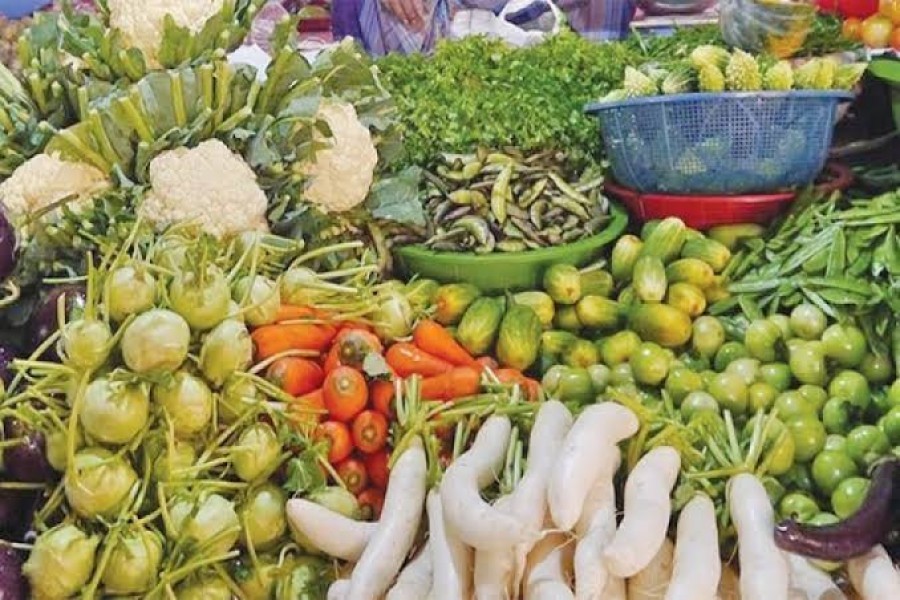In Dhaka, these days, the kitchen markets are seen filled with all types of vegetables round the year. They include tomatoes, bringals, beans, radish, carrots, gourds, and bitter gourds. Most of the buyers of these vegetables are in essence innocent. They have little inkling that these vegetables have entered the market straight from the cold storages.
Moreover, a few vegetables are grown in the country round the year, despite their taste and smell being different from the seasonal ones. However, a lot of people are not that impatient that they would fall for these all-season vegetables. They wait for winter, the perfect season for fresh vegetables. The items produced and harvested in the right time of the year carry a special appeal.
The fresh winter vegetables have already started flooding the markets in Dhaka and other cities. Piles of neatly placed vegetables are expected to offer these markets a different look for the next three months.
As per Bangla calendar months, full and formal winter is just a month away. The riddling factor is, despite the advent of pre-winter, there are little signs of it except a considerable fall in temperature by night. In the capital Dhaka, the season has lately become so fleeting and elusive that it recedes completely before many could fully realise its presence. The factor doesn't apply to the abundant supply of vegetables in the market. Their formidably high price is altogether a different matter, though.
This year, the higher-price malady began with the illusory onion, a blend of vegetable and spice. Without it, an otherwise tasty curry is no curry at all. Begalees are not used to having rice without curries and lentils. The latter two items are unthinkable without onions.
Scarcity of onions is an unusual development this year. The reality is there have been little dearth of vegetables in general in the kitchen market in the recent years. In some years there are gluts of cauliflowers, cabbages and tomatoes. It prompts the retailers to sell those vegetables at a throwaway price. With not much eager buyers around, the produces are left to rot in dumping corners near the markets. All this points to an inevitable fact: like paddy and potatoes, leafy-green vegetable growth has undergone a revolution of sorts in the country. In the seasons free of scourge and fallout of untimely floods, the farmers in general are being handed down a bumper production of vegetables. Lately, the producers' enthusiasm has soared so high that a lot of them have started growing foreign vegetables. Broccoli, capsicum and other salad items occupy a dominant place among these exotic products.
Like in the previous years, the spectacle of stacks of vegetables and myriad types of spinaches speaks volumes of the country's soil fertility – and the ability to grow different kinds of vegetables. In the past the country's winter vegetables remained limited mainly to cauliflowers, cabbages, tomatoes and gourds. The list also included papaya, cucumber and onion leaves. Their looks and sizes were far from being impressive. In the recent years, the exuberant and larger-size appearances of the same vegetables elicit the adjective 'bilati', meaning foreign-produced. They are not of foreign origin. The secret lies in the excessive use of chemical fertilisers and other farming ingredients during the cultivation of these vegetables.
The bigger sizes and fresh looks finally prove deceptive when one keeps in mind the harmful impact of chemicals on human health. Overuse of these agents of growth robs vegetables of their natural taste and many nutrients. People consuming them are found becoming easy target of many diseases. Moreover, the exorbitant prices of common winter vegetables continue to afflict the kitchen market. Higher prices, caused by alleged syndicate machinations, make the vegetables either tasteless or bitter.


